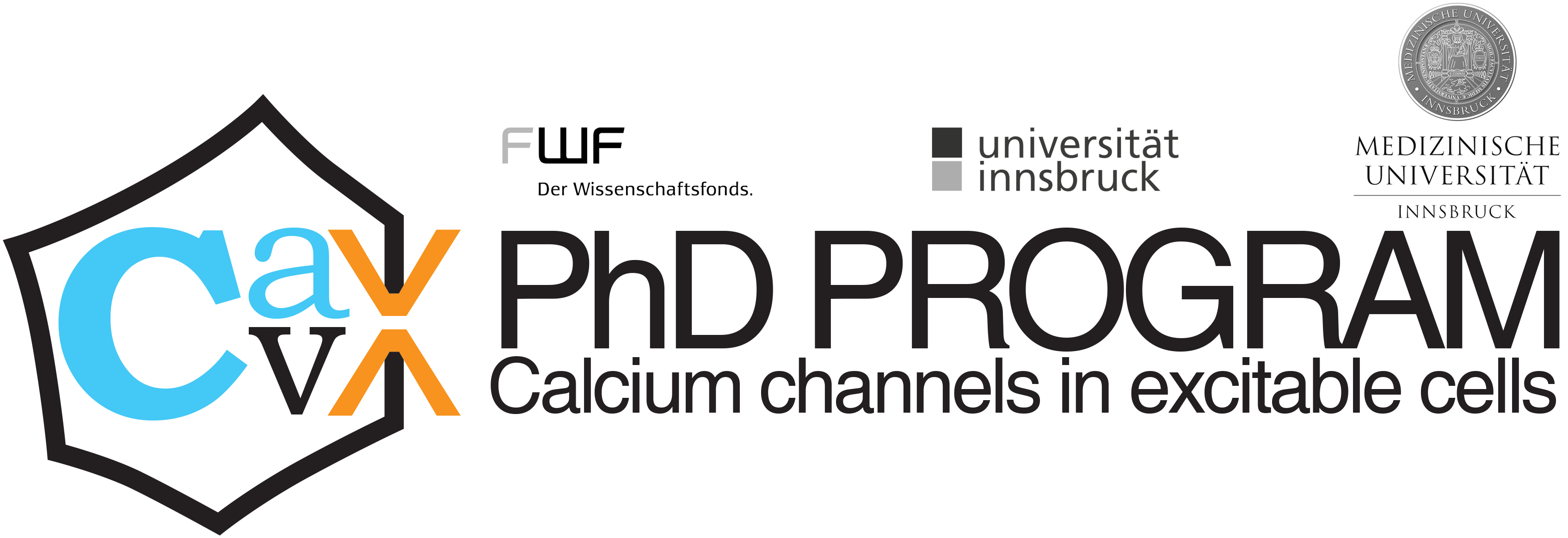// STEFANIE M. GEISLER
Tuluc Research Group
Institute of Pharmacy, Dept. of Pharmacology and Toxicology
University of Innsbruck
// INFORMATION
Nationality: Austrian
Education: MSc (Salzburg, Austria), PhD (supervisor Univ.-Prof. Mag. Dr. Gerald Obermair (Medical University, Karl Landsteiner))
E-Mail: stefanie.geisler@uibk.ac.at
ORCID (0000-0002-8898-0108)
// PROJECT
// AIM
Voltage-gated calcium channels (CaVs) provide the primary mechanism for activity-regulated Ca2+ influx into neuroendocrine chromaffin cells and brain neurons. They are thus critical for vitally important functions such as cell excitability, hormone & neurotransmitter release, and gene expression. Because of their multiple roles and widespread expression any malfunction of these channels can lead to severe endocrine and neurological syndromes, including hyperaldosteronism, epilepsy, and autism spectrum disorders. In my research I am thus aiming to resolve the role of distinct CaV α1 isoforms and their accessory subunits (α2δ, Stac) in chromaffin cells and neurons.
// RESEARCH TOPICS
- Role of auxiliary subunits in chromaffin cells
Chromaffin cells (CCs) of the adrenal medulla are neuroendocrine cells that secrete catecholamines in response to acute stress to prepare the body for the so-called “fight or flight response”. The release of the catecholamines adrenaline and noradrenaline from CCs is controlled by the sympathetic nervous system. Acetylcholine released from the splanchnic nerve terminals close to CCs activates the nicotinic receptor depolarizing the membrane and triggering the opening of the voltage-gated calcium channels. Mammalian CCs express all types of high voltage-gated calcium channels (HVCC) (L-, N-, P/Q-, R- and T-type) with CaV1.2, CaV2.1 and CaV2.3 being dominant. Similar to pancreatic β-cells, HVCC activation also shapes the electrical activity of CCs and controls catecholamine release. In this project we analyze how HVCC subunits modulate mouse chromaffin cell calcium influx, electrical activity and catecholamine release.
- Role of Stac proteins in brain neurons
Somatodendritic CaV1.2 and CaV1.3 L-type Ca2+ channels (LTCC) convey Ca2+ influx that drives fundamental neuronal functions, including synaptic plasticity and cell excitability. Ca2+ entry through LTCC is tightly regulated by a negative feedback mechanism called Ca2+-dependent inactivation (CDI). Recent studies in cultured cells revealed that overexpression of SH3 and cysteine rich domain protein 2 (Stac2) inhibits CDI of LTCC thereby prolonging Ca2+ influx. In this project we aim to address the physiological role of Stac2 in healthy and potentially diseased brain neurons. Since STAC2 missense mutations have been identified in patients with schizophrenia our findings will begin to provide novel insights into how Stac2 may contribute to pathology of neuropsychiatric-related behaviors
// METHODS
Primary cultures (mouse neurons, mouse chromaffin cells), Electrophysiology (current and voltage clamp), Calcium imaging, Immunofluorescent & histological staining, High-resolution microscopy, Molecular Biology (Western Blot, qPCR), mouse handling, breeding & behavior.
// INTERNAL COLLABORATIONS
